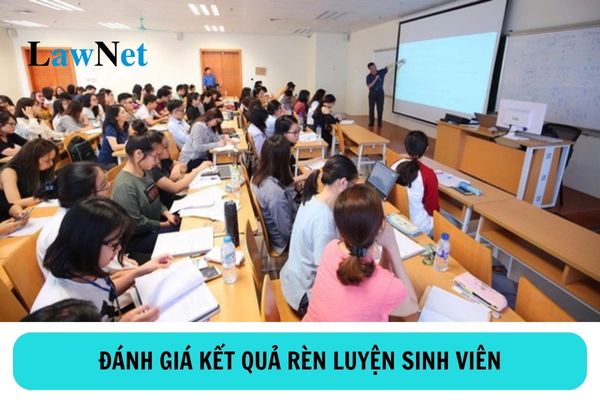Vietnam: What are the criteria and point framework for assessing the training results of university students?
What are the criteria and point framework for assessing the training results of university students in Vietnam?
Under Chapter 2 of the Regulation on Assessment of Training Results for Students issued together with Circular 16/2015/TT-BGDDT, the criteria and point framework for assessing the training results of university students in Vietnam are as follows:
* Assessment of learning participation awareness
- Criteria for determining assessment points:
+ Awareness and attitude in learning;+ Awareness and attitude in participating in learning clubs, learning activities, extracurricular activities, and scientific research activities;
+ Awareness and attitude in participating in exams and competitions;+ Spirit of overcoming difficulties, striving for progress in learning;
+ Learning results.
- Point framework from 0 to 20 points.
* Assessment of compliance with rules and regulations within the university
- Criteria for determining assessment points:
+ Awareness of compliance with directives from the sector, and directives from higher authorities implemented in the university;
+ Awareness of compliance with internal rules, regulations, and other applicable regulations within the university.
- Point framework from 0 to 25 points.
* Assessment of participation in political, social, cultural, artistic, sports activities, crime and social evils prevention
- Criteria for determining assessment points:
+ Awareness and effectiveness in participating in political, social, cultural, artistic, and sports training activities;
+ Awareness of participation in public benefit activities, volunteering, social work;
+ Participation in crime and social evils prevention awareness.
- Point framework from 0 to 20 points.
* Assessment of citizenship awareness in community relations
- Criteria for determining assessment points:
+ Awareness of complying and propagating the policies of the Communist Party of Vietnam, policies, and laws of the State within the community;
+ Awareness of participating in social activities with recognized, commended, and rewarded achievements;
+ Spirit of sharing and helping relatives and those in difficulty or distress.
- Point framework from 0 to 25 points.
* Assessment of awareness and results in participating in class, association, and organization activities within the university, or achieving special learning and training results
- Criteria for determining assessment points:
+ Awareness, spirit, attitude, reputation, and work effectiveness of learners assigned managing duties for the class, Communist Party of Vietnam organizations, Youth Unions, Student Associations, and other organizations within the university;
+ Skills in organizing and managing the class, Communist Party of Vietnam organizations, Youth Unions, Student Associations, and other organizations within the university;
+ Support and active participation in the general activities of the class, collective, faculty, and university;
+ Learners achieving special results in learning and training.
- Point framework from 0 to 10 points.

What are the criteria and point framework for assessing the training results of university students in Vietnam? (Image from the Internet)
How many categories of training results are there for university students in Vietnam?
Under Article 9 of the Regulation on Assessment of Training Results for Students issued together with Circular 16/2015/TT-BGDDT, university students' training results are classified into the following categories: excellent, good, rather good, medium, weak, and poor.
The training point scale is as follows:
- Training points from 90 to 100 points: excellent;
- Training points from 80 to below 90 points: good;
- Training points from 65 to below 80 points: rather good;
- Training points from 50 to below 65 points: medium;
- Training points from 35 to below 50 points: weak;
- Training points below 35 points: poor.
What is the process of assessing the training results of university students in Vietnam?
Under Article 11 of the Regulation on Assessment of Training Results for Students issued together with Circular 16/2015/TT-BGDDT, the process of assessing the training results of university students is as follows:
Step 1: Students, based on their training results, self-assess according to the detailed scoring criteria set by the university.
Step 2: A class meeting is organized with the participation of the homeroom teacher or academic advisor. The class reviews and approves each student's self-assessment score based on verified evidence. The score must receive more than half of the class unit's approval and be accompanied by a Minutes of the meeting.
The homeroom teacher/academic advisor confirms the class meeting results and forwards them to the Faculty-level Training Result Assessment Council (hereinafter referred to as the Faculty Council).
Step 3: The Faculty Council meets to review, unify, and report to the Faculty Head for approval. The results are then submitted to the University-level Training Result Assessment Council (hereinafter referred to as the University Council).
Step 4: The University Council meets to review, unify, and submit the results to the Principal for approval and recognition.
The assessment and grading results of students' training results must be publicly announced and communicated to the students at least 20 days before the official decision is issued.

